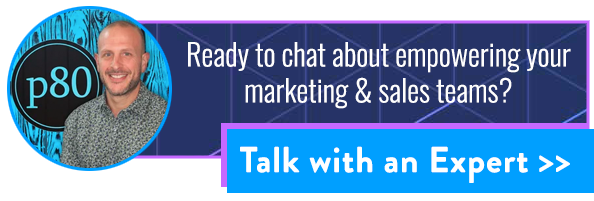Inbound Marketing Blog
for Manufacturers and Healthcare Companies
FROM THE DESK OF A SALES COACH: Inbound Sales for Dummies

The rise of the informed consumer, who researches, compares, and often knows precisely what they want, has necessitated a shift in how businesses approach sales. Enter: inbound sales.
For marketers, this isn't just another buzz term to add to the ever-growing list. It's a fundamental shift in strategy that directly impacts how we attract, engage, and delight our audience.
Inbound sales, much like its counterpart inbound marketing, is a reflection of the changing dynamics in the buyer-seller relationship. Gone are the days when aggressive sales pitches and cold calls were the norm.
Today's consumers expect more.
They seek authenticity, value, and a personalized experience. They don't want to be sold to; they want to be understood. And this is where inbound sales shines.
Understanding Inbound Sales 🥨
Inbound sales, akin to its cousin inbound marketing, is a unique approach to selling. It's not about chasing potential customers or bombarding them with unsolicited pitches. Instead, it's about understanding and addressing their needs, pain points, and journey.
Imagine you're at a mall. You're on a mission to grab a delicious pretzel from Auntie Anne's. But on your way, you're accosted by a persistent salesperson from a lotion kiosk. They're insistent, almost chasing you, urging you to try their product. That's traditional sales for you. It's aggressive, interruptive, and often, unwelcome.
In contrast, inbound sales is like having customers walk up to the lotion kiosk because they're genuinely interested. They've heard about the lotion, they believe it might solve their problem, and they want to know more. This is where the sales team steps in, not to push a product, but to guide and advise.
The Inbound Sales Process
HubSpot, a pioneer in the inbound world, describes the Inbound Sales Methodology as a process that's "personalized, helpful, and directly focused on prospects’ pain points through their buyer's journey." The buyer's journey comprises three phases: awareness, consideration, and decision.
For sales teams, this translates into four actionable steps:
- Identify: Recognize potential leads who show interest.
- Connect: Engage with these leads to understand their needs.
- Explore: Delve deeper into their problems, past experiences, and expectations.
- Advise: Offer solutions that genuinely address their concerns.
Why Marketers Should Care
As a marketer, you play a pivotal role in this process. Your campaigns, content, and strategies generate leads. Through automation and nurturing, you transform these leads into Sales Qualified Leads (SQLs), essentially warming them up for the sales team.
When the sales team steps in, they're not dealing with cold, uninterested leads. They're dealing with potential customers who are already interested, informed, and engaged. This makes the sales process smoother, more efficient, and more likely to succeed.
Key Takeaways for Marketers
- Align with Sales: Ensure that your marketing strategies align with the sales process. Understand the buyer's journey and create content that caters to each phase.
- Educate and Nurture: Use automation to nurture leads. Provide them with valuable information that addresses their pain points and moves them down the funnel.
- Monitor KPIs: Keep an eye on key performance indicators. Track how many leads move from the awareness phase to the decision phase, and how many of these convert into customers.
- Be Helpful: Just as the sales team focuses on being helpful, ensure your marketing content is genuinely useful and not just promotional.
Improve Your Inbound Sales Process
Inbound sales is not just a sales methodology; it's a philosophy. It's about respecting the buyer's journey, understanding their needs, and offering genuine solutions.
As marketers, embracing this philosophy can lead to more effective campaigns, better lead quality, and ultimately, higher conversion rates. So, the next time you plan a campaign, think inbound. Think helpful. Think customer-first.
If you're reading this and shaking in your boots because you know your sales team is:
- Cold calling from a purchased list
- Sending emails that are company-focused versus customer-focused
- Spamming unqualified leads
... It might be time to pull in an inbound sales coach:
Our Blogs, Direct to Your Inbox!
How to Audit your Online Marketing
If you are executing digital marketing, congratulations! You are most likely already one step ahead of your competition, and making strides to meaningfully connect with prospects online. But, how do you know if you’re seeing continual success year over year, and improving your metrics?
Without the tools in place to analyze and benchmark your efforts, it is impossible to scale your online marketing and ensure continuous success.


